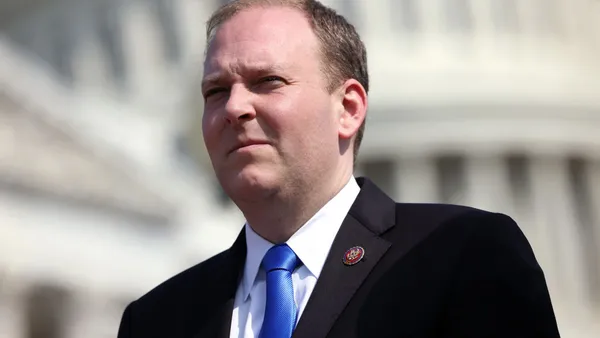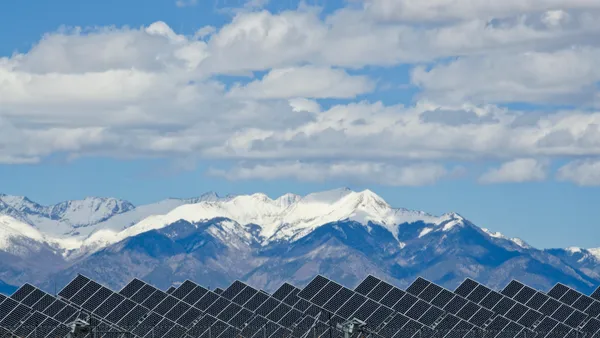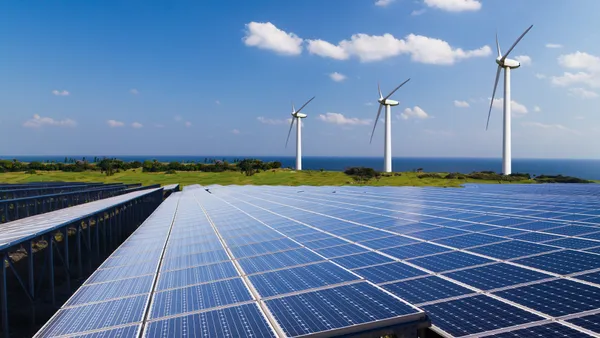Dive Brief:
- Carbon dioxide emissions could be slashed by 80% without significant consequences on the retail price of power, according to a new study published yesterday in the journal Nature Climate Change.
- The results also indicate that energy storage is not a necessary component of electrical grid with heavy renewable energy penetration, bucking conventional wisdom that says the ability to store clean power is key to economically meeting new environmental goals.
- Bloomberg Business reported that co-lead author Christopher Clack, a physicist at the University of Colorado, said wind, solar and gas generation can be a "bridge" to a low-carbon future that does not involve higher costs.
Dive Insight:
A new study published by Nature Climate Change calls into question some fundamental ideas about how the U.S. power grid can meet new carbon regulations and how much it will cost.
The study's abstract says that "when using future anticipated costs for wind and solar, carbon dioxide emissions from the US electricity sector can be reduced by up to 80% relative to 1990 levels, without an increase in the levelized cost of electricity."
“What the model suggests is we can get a long way, and wind and solar and natural gas can be a bridge,” Clack told Bloomberg in a recent interview. “There is a path that could be possible to achieve those goals, and it doesn’t necessarily need to drive up costs.”
Bloomberg reports the study finds a mix of renewables and gas power could cut prices by 10%, and a national grid overhaul could save consumers more than $47 billion annually. Key to the research is a model that relied on extensive transmission investment to connect demand with far-flung clean generation, reducing the need for storage, according to the group of scientists from the University of Colorado and the U.S. National Oceanic and Atmospheric Administration (NOAA) who performed and wrote the study.
“It looks a lot like an interstate highway system for electrons,” co-author Alexander MacDonald, a recently retired NOAA scientist told Bloomberg. “You can pipe the power around in real-time and essentially have electricity that’s the same cost as today.”
The study didn't take into account the finalized Clean Power Plan, which aims to cut greenhouse gas emissions from the power sector 32% by 2030 and is expected to drive investment in transmission, gas generation and renewables.














